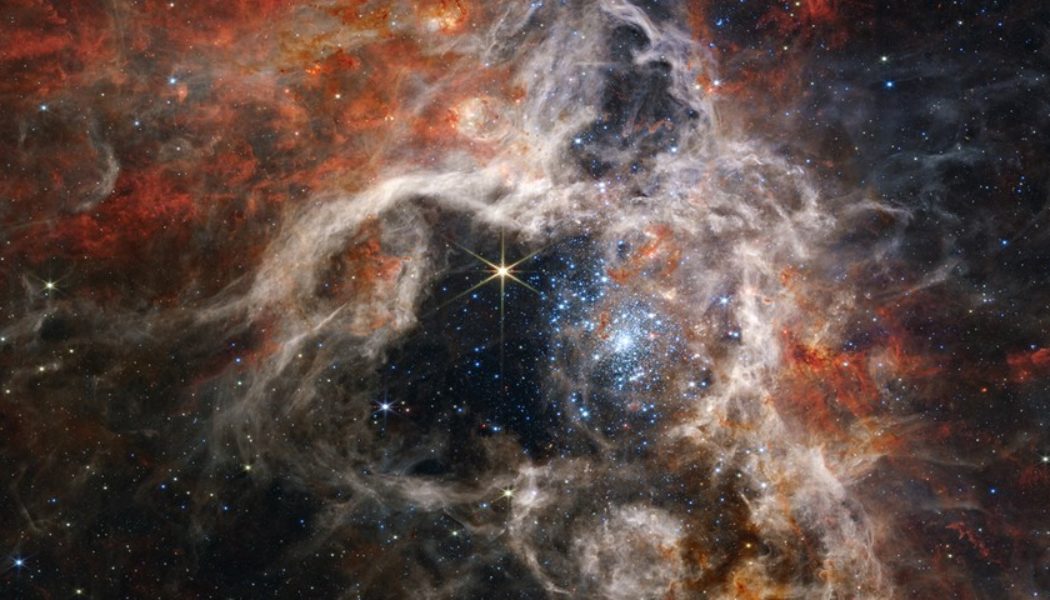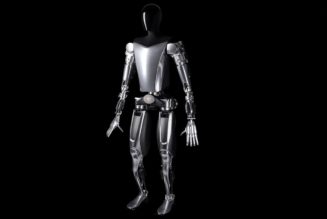
A “space tarantula” may sound like a fearsome Star Wars character or an unlikely ally from Rick and Morty, but it’s a real thing — and NASA has just revealed images of one that were captured by the James Webb Telescope. Stretching 340 light-years across, the “space tarantula” is a star-forming region dubbed Tarantula Nebula that consists of tens of thousands of young stars and was previously not visible due to older telescopes like the Hubble being unable to penetrate its shroud of cosmic dust.
NASA notes that Tarantula Nebula is located 161,000 light years away, is the largest and brightest star-forming region in the galaxies nearest the Milky Way and is home to the hottest and largest stars known to mankind. It was viewed through three of the James Webb Telescope’s powerful cameras: the Near-Infrared Camera, under which it resembles a burrowing tarantula’s silk-lined home (where its nickname comes from), the Near-Infrared Spectrograph, which showed a star forming and the Mid-Infrared Instrument, which uses longer infrared wavelengths to shine a light on the cooler gas and dust present in the area.
The “Space Tarantula” is interesting to astronomers because it’s the closest area to the Milky Way that presents similar chemical compositions to the universe’s “cosmic noon,” which NASA describes as a rapid period of star growth “when the cosmos was only a few billion years old and star formation was at its peak.” NASA goes on to explain that “star-forming regions in our Milky Way galaxy are not producing stars at the same furious rate as the Tarantula Nebula, and have a different chemical composition. This makes the “Tarantula the closest” (i.e., easiest to see in detail) example of what was happening in the universe as it reached its brilliant high noon.”
Head over to NASA’s website to learn more about the “Space Tarantula,” and for more images from the James Webb Telescope, be sure to check out its breathtaking photos of Jupiter and a cartwheel galaxy.









